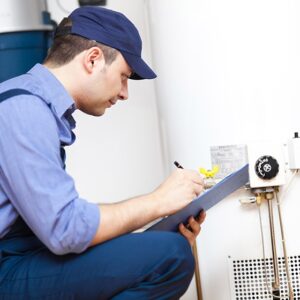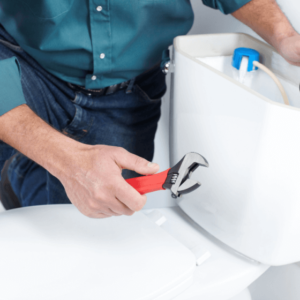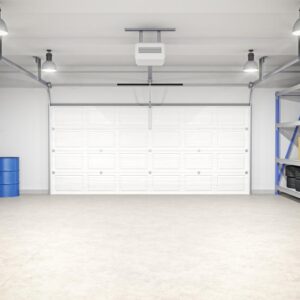Did you know the air inside your home could be more polluted than the air outside? A troubling thought, but don’t panic. There are easy ways you can improve the quality of the air inside your home.
Step 1: Know What’s in Your Air
A number of pollutants, both natural and manmade, can build up in your home and cause health problems. You need to know what they are and how to eradicate them. Bad indoor air is caused mostly by two kinds of pollutants: allergens (also known as biological pollutants) and chemical irritants.
Allergens: There are a number of allergens in the air of the average household. Common irritants include mildew, mold, bacteria, viruses, house dust, pet dander, and pollen that’s tracked in from outside. Dust mites and other pests like cockroaches and rodents each leave their own mark on the air quality in your home. The waste produced by these types of critters often ends up airborne and, when inhaled, can prompt an allergic response.
Certain areas of your home produce ideal conditions for particular allergens to thrive. For example, damp areas in a basement or bathroom can produce mold. Carpet, bedding, and other textiles that collect dust can also be a haven for dust mites and pet dander.
Chemical Irritants: These pollutants range from everyday household items like cleaning products to dangerous compounds and elements such as carbon monoxide and radon.
The paint on your walls, wood finishes, and stains, aerosol sprays, cleaners and disinfectants, air fresheners, and even dry-cleaned clothing can give off hazardous substances called Volatile Organic Compounds (VOCs). In the short-term, VOCs can cause health problems like respiratory irritation, headaches, nausea, and dizziness. Long-term exposure can cause damage to internal organs and the central nervous system and has even been linked to cancer.
Aside from VOCs, other hazardous chemicals are given off from household items and structures as well. Formaldehyde is emitted from pressed wood products (used for some types of furniture), tobacco smoke, and certain textiles and glues. And while they haven’t been used for many years, asbestos and lead are still found in older existing structures and paints.
Two potentially deadly substances that might also lurk in your home are carbon monoxide and radon. Carbon monoxide is an odorless, colorless gas that can be lethal in high concentrations. The same goes for radon, a natural radioactive gas that is colorless, odorless, and tasteless. At high levels, radon can lead to cancer.
Step 2: Ventilate Your Home
You can protect yourself and your family by properly ventilating your home. Good ventilation decreases the build-up of harmful compounds that can affect your health. You can do this simply by periodically opening windows, using window fans or by using window air conditioning units. Exhaust fans, outdoor-vented fans, and air purifiers are excellent ways to keep air flowing in and out of the house. These will also help create an energy-efficient, healthy and comfortable home environment.
Step 3: Clean and Dust Regularly
Clean frequently. This may seem like a no-brainer — after all, many people clean their homes routinely, especially if they are having company. But a clean home is about more than keeping up appearances; thoroughly cleaning your home prevents the build-up of the allergens and irritants that can make a home unhealthy. Vacuuming carpets, dusting surfaces and drapes all cut down on dust mites, pet dander and other harmful particles.
Dust mites feed on the dead skin cells of humans and animals. Though they’re invisible to the naked eye, they produce feces that are harmful when inhaled. To reduce the number of these pests, clean your bedclothes weekly, keep your pets off of furniture and decrease your home’s humidity level with a dehumidifier.
Avoid using dusters when dusting. These only push particles around. Instead, use a damp cloth to pick up dust without stirring it into the air.
HELPFUL TIP
Wear a dust mask when vacuuming and dusting. This will prevent you from breathing in any harmful particles being spread around in the air.
Damp areas like shower stalls and tubs in your bathroom or other areas need to be cleaned regularly to prevent mold and mildew growth. Use a spray cleaner formulated to fight mold and mildew and a heavy-duty sponge to tackle your shower and tub regularly.
Step 4: Change Air Filters
The filters for your home’s HVAC system don’t take long to fill up with dust and other particles that you don’t want to breathe in. The more often you change the filter, the fewer harmful particles will be circulating through your vents. A new filter also keeps your HVAC system running smoothly and efficiently.
HELPFUL TIP
Invest in a high-quality filter. They cost a bit more, but you get what you pay for. The more opaque the mesh of fibers is in the filter, the better it will remove particles from the air. If you can see through the filter, it won’t do the job as well.
Step 5: Add Houseplants
Indoor plants naturally filter the air by using the particles and elements that they need and converting them to fresh air. In the process, the plant absorbs any contaminants in the air. Check with your local nursery or other horticultural experts to see which plants are best for your house and the air you breathe inside of it.
Step 6: No Smoking Indoors
Smoking indoors has been banned in public buildings in many towns and cities across the country due to health concerns from secondhand smoke and the residue tobacco smoke leaves behind. Your house should be no different if you don’t want toxic substances adhering to your walls, furniture, and clothing. If you or a guest wants to smoke, go outside. You’ll be taking one more step to fresher, healthier air in your home.
Now you’re on your way to better air quality inside your home. Take a deep breath and enjoy.
Project Shopping List
Here’s what you’ll need to complete this project successfully.












